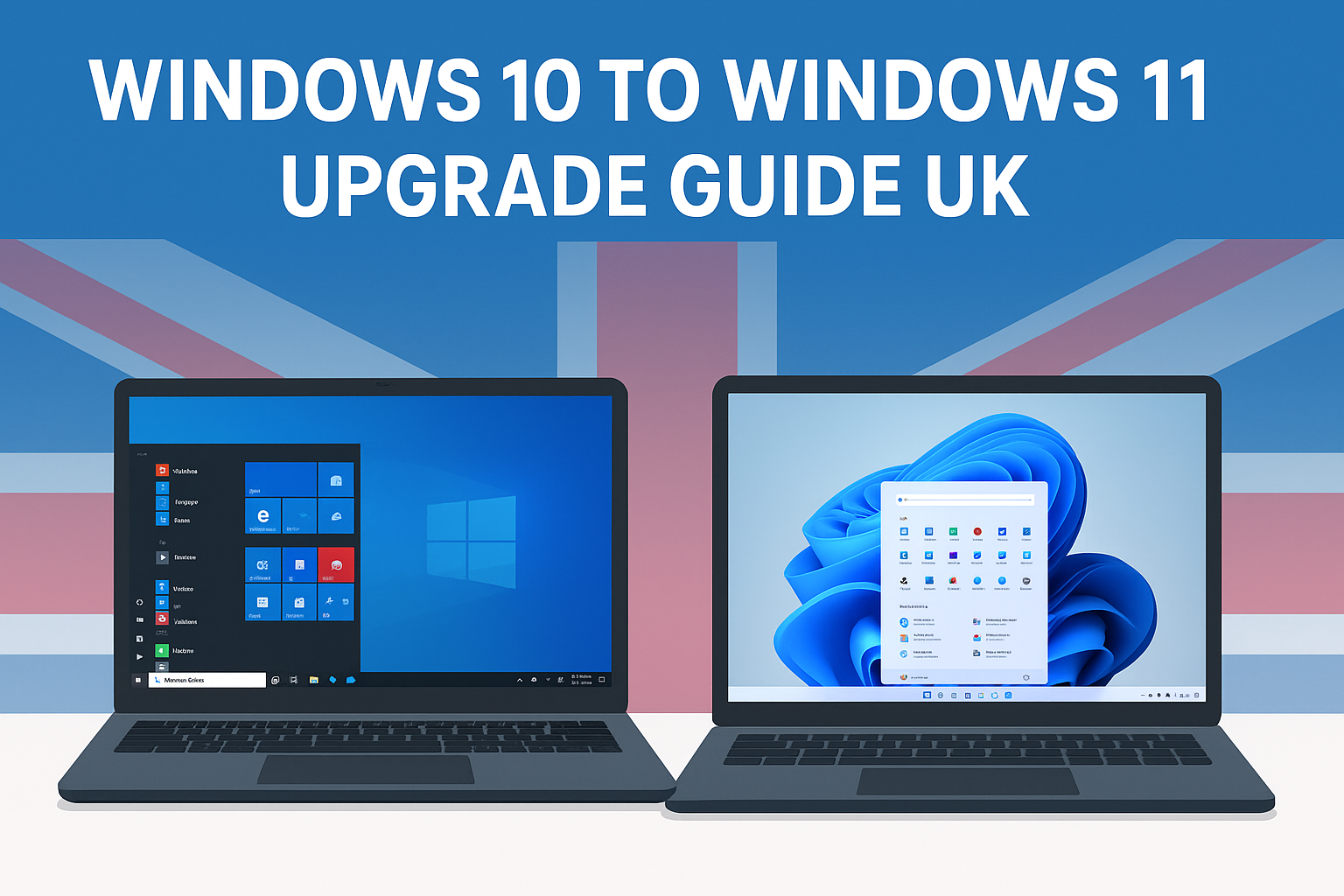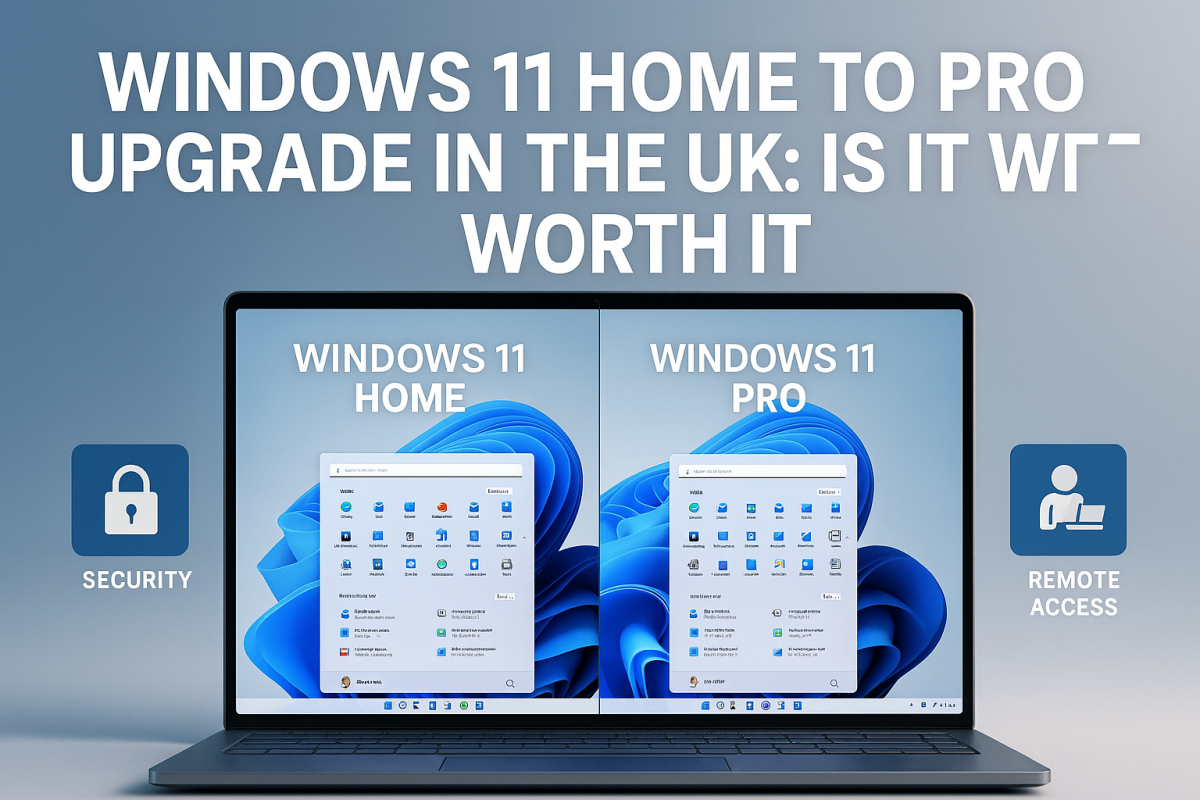Windows 10 to Windows 11 Upgrade Guide UK: Should You Make the Move?

Still on Windows 10? You’re Not Alone
If you’re in the UK and still running Windows 10, don’t worry — you’re far from the only one. Millions of people are sticking with it, partly because it works just fine, and partly because they’re not sure what to make of Windows 11.
You’ve probably seen the upgrade pop-ups or read about the new look. Some people love it, others aren’t convinced. So, the big question is: should you upgrade from Windows 10 to Windows 11, or stay where you are? Let’s make it simple.
What’s Actually New in Windows 11?
Yes, Windows 11 looks different — centred taskbar, rounded corners, and a more modern feel — but the changes go beyond appearances. Here are some highlights that matter day-to-day:
- Performance tweaks – Faster startup and smoother multitasking.
- Snap layouts – Quickly arrange windows side by side without fiddling.
- Widgets – At-a-glance news, weather, and calendar updates.
- Gaming perks – Auto HDR and DirectStorage make a real difference for gamers.
- Security upgrades – Stronger default protections, important for both home users and businesses.
It’s not a complete reinvention, but it does feel more polished and future-ready.
Can Your PC Handle the Upgrade?
Here’s where things get a bit tricky. Not every PC that runs Windows 10 can move to Windows 11. The key requirements include:
- A TPM 2.0 chip (most modern devices have it).
- Secure Boot enabled.
- At least 4 GB RAM and 64 GB storage.
👉 Not sure if you’re eligible? Download Microsoft’s PC Health Check tool — it’ll give you a yes/no in seconds.
What About UK Users Specifically?
In the UK, the upgrade process is the same as elsewhere. If your device qualifies, Microsoft lets you upgrade for free. But if you’re building a new system, or need a licence for a clean install, you’ll need a genuine key.
That’s where trusted UK resellers come in. For example, SH Softwares

